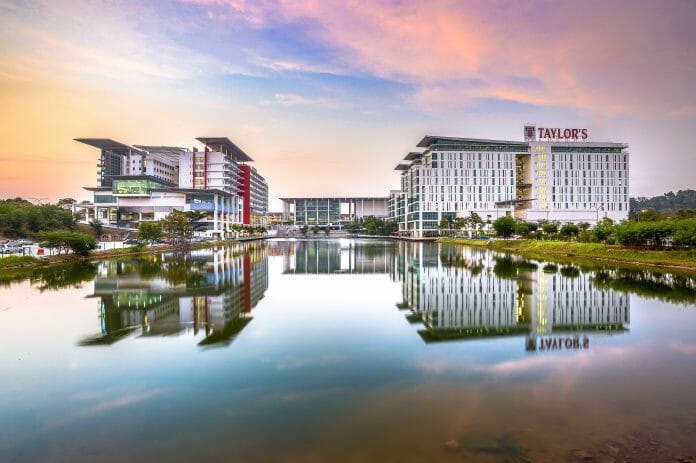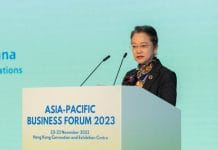In an era defined by rapid technological advancements and the relentless pursuit of innovation, the role of universities transcends traditional academic boundaries. With its sights set on becoming a global technological powerhouse, Malaysia is strategically positioning itself to transform its universities into International Industrial Research and Technology hubs. This article explores the critical importance of this transition, comparing it to the current international research university model. We will delve into why universities worldwide are embracing the 1-on-1 scale approach, investing in industry-aligned lab facilities, and steering towards IR 5.0 to align with the vision for 2030.
Pursuing international industrial research and technology university status is synonymous with Malaysia’s ambition to be at the forefront of global technological innovation. As the world advances into the Fifth Industrial Revolution (IR 5.0), characterized by integrating cyber-physical systems and artificial intelligence into various industries, universities must evolve to meet future demands.
Malaysia’s 2030 vision recognizes the pivotal role of technology in driving economic growth and enhancing the country’s competitiveness. The transition to an international industrial research and technology university model signifies a commitment to nurturing a talent pool capable of leading in emerging fields such as quantum computing, biotechnology, and sustainable energy.
The current international research university model has successfully produced groundbreaking research. Still, the transition towards an industrial research and technology focus signifies a more profound commitment to bridging the gap between academia and industry. The 1-on-1 scale approach and industry-aligned lab facilities create an environment where theoretical knowledge seamlessly integrates with practical application.
Evidence from leading universities globally showcases the benefits of this approach. For example, the Massachusetts Institute of Technology (MIT) in the United States, renowned for its emphasis on hands-on learning and collaboration with industries, consistently produces graduates who significantly contribute to technological advancements and economic development.
The evolution towards Industry 4.0 has reshaped the nature of laboratories within universities. The emphasis on 1-on-1 scale products and industry-aligned lab facilities reflects the need for students to engage with technologies mirroring those found in the real-world industrial setting.
Universities worldwide are investing in advanced laboratories equipped with cutting-edge technologies, enabling students to work on projects that simulate industry challenges. This prepares them with technical skills and the ability to navigate the complexities of modern workplaces. Malaysia’s commitment to Industry 4.0 aligns with the government’s initiatives to drive digital transformation and innovation.
The journey towards IR 5.0 is a proactive step to prepare students for future technologies. The 2030 vision for Malaysia recognizes the need to embrace technologies such as artificial intelligence, blockchain, and the Internet of Things. International Industrial Research and Technology Universities are positioned to lead in these domains, fostering an environment where students engage with and contribute to developing IR 5.0 technologies.
A report by the World Economic Forum highlights that future jobs will require a combination of technical and social skills. The transition to IR 5.0 necessitates universities to go beyond traditional academic boundaries and instill in students the ability to adapt to rapidly changing technological landscapes.
The international status of industrial research and technology universities opens doors to global collaboration and knowledge exchange. Collaborative research projects with international partners and industry players enhance the university’s reputation on the worldwide stage. This, in turn, attracts top-tier faculty and students, fostering a diverse and dynamic learning environment.
Leading international universities, such as ETH Zurich in Switzerland and the Technical University of Munich in Germany, have established themselves as hubs for global collaboration. Malaysia’s shift towards international industrial research and technology universities positions the country as a critical player in the worldwide knowledge exchange network, attracting talent and investment.
The transition to an international industrial research and technology university model is not just an academic endeavor but a strategic move to drive economic growth and job creation. A study by the McKinsey Global Institute estimates that technological advancements, particularly those associated with Industry 4.0, could contribute trillions of dollars to the global economy.
The teaching is also changing into mentor and mentee interaction between trainer and trainee. Instead of tedious classroom interaction, which is still quite famous in Malaysia, the current IR 5.0 will see a change in academic teaching. All the learning will be a heads-on teaching experience, with 1-on-1 similar activities in industries and backgrounds. All the education will be based on hands-on, 1-on-1, identical to those practical in industry and not only based on books and theory-based learning in classrooms.
By aligning university curricula with industry needs, Malaysia aims to produce a workforce that can drive innovation, attract foreign investments, and propel the nation towards becoming a high-income economy. The emphasis on practical skills, real-world projects, and global collaboration positions graduates to be job-ready and capable contributors to economic development.
In conclusion, Malaysia’s pursuit of international industrial research and technology university status signifies a bold step towards global technological leadership. The transition from the current international research university model to one that emphasizes 1-on-1 scale products, industry-aligned lab facilities, and readiness for IR 5.0 is rooted in the recognition of the transformative power of technology on economies and societies.
As Malaysia charts its course towards the 2030 vision, the role of universities as catalysts for innovation, economic growth, and global collaboration becomes increasingly pivotal. The evidence presented in this article underscores the importance of this transition, positioning Malaysia on the international stage as a hub for technological excellence and a driver of the next wave of industrial revolution.
Ts. Dr. Hj. Muhammad Khusairy Bin Capt. Hj. Bakri is a Postdoctoral Research Associate at Composite Materials and Engineering Center, Washington State University (WSU), a Faculty-Staff member for the Center of Bioplastics and Biocomposites (CB2) for North Dakota State University, United States of America, and a Lead Research and Development Sector of the Association of Professional Technicians and Technologists (APTT) Sarawak, Listed and indexed in the “Science and Research” category on the Fifth Edition of “Successful People in Malaysia” by Britishpedia as a successful young researcher in Malaysia published by British Publishing House Ltd., working on composite materials from the forest and industry products.









